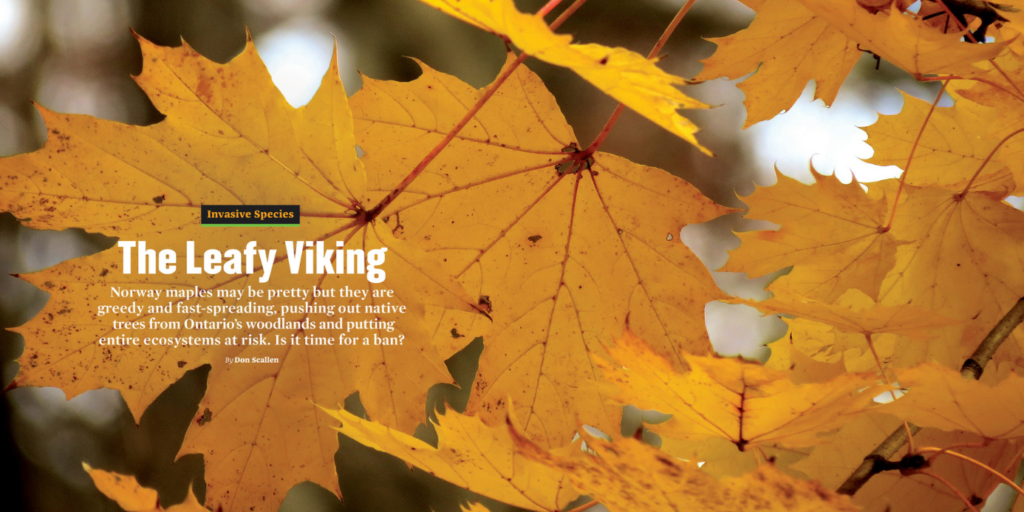
Re: The Leafy Viking
I read your article regarding Norway maple trees with interest.
I am very interested in preserving our native caterpillar populations and support planting native tree species. To that end I have planted two paper birch trees, a swamp willow, a striped maple and a tamarack on my residential property. I also keep varieties of milkweed, dill, butterfly bush, turtlehead and other native plants to support caterpillars and other native species.
But that is not enough in the modern environment to guarantee species survival. This spring, the City of Toronto sprayed Bacillus thuringiensis (Bt) twice over my property as well as the Lambton Woods you have illustrated in your article. In my yard, it slowly killed the caterpillars. It continued to kill them beyond what the Ministry’s expectations were of the duration of the effect. My suspicion is that when a sick caterpillar explodes (see photo) it spreads the disease and prolongs the infection stage.
I am aware of the effects on the monarch population because I am able to see them on my milkweed plants. I have wondered about all the other anonymous caterpillars and other insects in the forests where they sprayed. How many species are eliminated because of regular spraying in the forests. ( not to mention local residents who complained of feeling ill after spraying)
When I was a child, we had gypsy moths and other moth and butterfly species. They were all plentiful. Today I have monarchs because I have gone out of my way to support them, but otherwise there are few butterflies and moths. Do we need to remove one species so badly that we are willing to sacrifice many others too?
If you eliminate Norway maples, you still won’t bring back the caterpillars (and the species that depend on them) if the conditions for life are damaged. I truly wish Bt would not be used, or neonics, which I suspect are another big insect decimator.
Nancy Moysiuk,
Etobicoke, Ontario

Hello Nancy,
I share your concern about Bt. It is a non-selective pesticide that kills any active caterpillars at the time of spraying. And that likely means scores of different lepidoptera species. While the aim of spriaying is worthy — saving oak trees that are favourite targets of the gypsy moth caterpillars — the full ramifications of spraying are likely very complex. Damage to the local ecology is a given. The big question of course is whether the scale of damage is justified to save trees. And how can we ever know with certainty? My take is that the ecological cascade effects — death of caterpillars translating into less food for birds — argues against using Bt unless it can be credibly demonstrated that it is going to save large numbers of trees.
Don Scallen